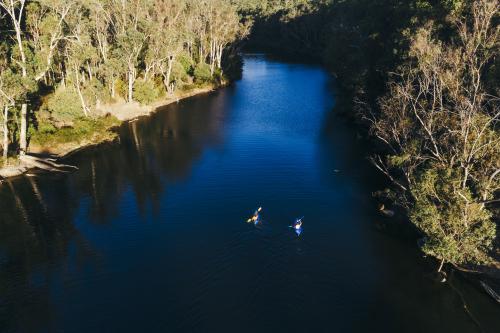Riding horses is part of the cultural heritage of Australia and an accepted means of appreciating and enjoying natural areas.
On Parks and Wildlife Service managed lands, horse riding activities are generally only allowed in locations where the impacts are considered manageable. Riding is permitted without special permission or notification on designated bridle trails and you can find information on these at Trails WA. Enquiries about permission and conditions to ride in other locations should be directed to local Parks and Wildlife offices for assessment on a case-by-case basis.
Shannon Horse camp in Shannon National Park has three bridle trails requiring a moderate level of skill and fitness, a large, fenced area, yards, hitching rails, water taps, compost bays and plenty of room to camp near your horse. Bookings are essential when camping and park entry fees and camping fees apply.
The use of natural areas for active recreation always carries some risk of overuse and disturbance. Riders need to avoid riding in sensitive environments and information provided by the local Parks and Wildlife Service office will identify these areas.
Horse riding trails and other areas are monitored for signs of impacts such as weeds and trampling. If impacts reach unacceptable levels, and there are no other practical management solutions, areas may be temporarily or permanently closed or relocated. Where practical, relevant user groups will be consulted in making such decisions.
The terrain in some parks can challenge even the most experienced riders. In large or remote parks, riders may find themselves far from emergency assistance. Riders in parks are requested to follow simple safety rules:
Carry a first-aid kit for both horse and rider on all long trips, along with other emergency gear such as rope and torches.
Check all equipment is in good working order before setting out.
Ensure horses are accustomed to the things they may encounter in parks, such as wildlife or cyclists, and are always under adequate control.
Keep all emergency gear in backpacks, not saddlebags, so it is not lost if you become separated from your horse.
If planning a long trip, leave your itinerary with someone at home.
Check predicted weather conditions before beginning the ride.
Have a lead rope handy so that the horse can be lead if the terrain gets too difficult.
Riders under the age of 18 must wear helmets when riding in parks. It is strongly recommended that all other riders also wear helmets.
If someone is seriously injured and help cannot be contacted, one or (preferably) two riders should go for help while the rest of the group remains with the injured person and their horse. If a horse escapes in a park, park staff must be notified as soon as possible.
For more information on how to prepare for and safely enjoy your activity see our Safety advice.


